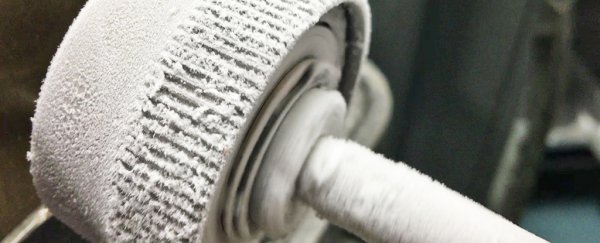NASA is working on a special kind of metallic glass to fit out its future robot explorers – a material that's hard-wearing, super-strong, and able to operate smoothly at very low temperatures.
For a vehicle exploring a frozen planet, that last point is crucial. Today's rovers, like Curiosity, need heated lubricant to keep working, which means precious power and energy is used up at the same time.
But this new type of glass, called bulk metallic glass (BMG), means we could save on all those resources. And we should see the material's benefits here on Earth too, as the same substance could be used to make robotic joints and gears that are cheap, flexible, and durable.
"Being able to operate gears at the low temperature of icy moons, like Europa, is a potential game changer for scientists," says NASA program manager R. Peter Dillon.
"Power no longer needs to be siphoned away from the science instruments for heating gearbox lubricant, which preserves precious battery power."
While BMGs aren't a new discovery, scientists have found it difficult to successfully fit them into structural hardware like robots and rovers.

Heat is crucial to the formation of BMGs. By heating metal into liquid form to randomise its atoms, then cooling it very quickly – by about 1,000 degrees Celsius (1,832 degrees Fahrenheit) per second – this disorganised, non-crystalline arrangement of atoms can be trapped in place.
This process produces a hard metal material with some of the internal properties of a liquid, which gives the BMG its unique flexibility and durability.
Technically, BMGs are still glass, and they can flow easily when heated, just like plastic, if they need to be moulded into new shapes.
The randomised atom structure also reduces the number of weak spots in the metal – think about the shape-shifting T-1000 robot in Terminator 2, and you're pretty close.
NASA's latest tests show BMG gears offering strong torque and smooth turning without any lubricant, even in temperatures as low as -200 degrees Celsius (-328 degrees Fahrenheit).
The researchers have also demonstrated how BMGs can be used in an expensive robotics component known as a strain wave gear, which essentially keeps the artificial joints moving. The BMG option is cheaper and easier to make than the conventional method, NASA says.
"Mass producing strain wave gears using BMGs may have a major impact on the consumer robotics market," says lead researcher Douglas Hofmann.
"This is especially true for humanoid robots, where gears in the joints can be very expensive but are required to prevent shaking arms. The performance at low temperatures for JPL spacecraft and rovers seems to be a happy added benefit."
The findings have been published in two new papers, in Advanced Engineering Materials and Scientific Reports.
